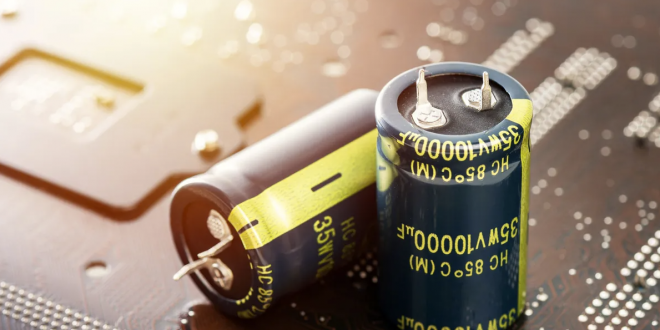Based on papers published at the same time by unrelated teams, two methods for improving capacitors’ ability to store charge appear to be effective. Each has the potential to make supercapacitors better at storing energy and maybe even put them in the running for large-scale energy storage.
For a long time, supercapacitors have been better than batteries because they can quickly release the charge they have stored. But not even the best supercapacitors have been able to store enough power to meet the most important needs of society. Sometimes, big steps forward have made supercapacitors look like they could compete in that market. But since lithium-ion battery prices have dropped so much, there isn’t much room for other batteries. That could change soon.
Two papers that came out last month in the same issue of Science both look at big improvements in capacitance. It remains to be seen if either of them can be scaled up, though.
The basic idea behind all capacitors is the same. There is a material between the positive and negative charges to keep them from jumping across the gap. When a switch is closed, the negative charges can move around to meet the positive charges. This makes an electric current, which can be used for many things.
Laptops and phones now have hundreds of capacitors inside them. When you look at a phone, you can tell how small they are. Because of this, the amount of power they can store is many times too small to power a car, let alone a city all night.
As you might guess from their name, supercapacitors have a lot more capacitance. Even though they’ve made regenerative braking possible, batteries are still the best choice for long-distance driving. To make that happen, the capacitance has to go up, which means finding cheap materials that stop very large amounts of charge from recombining.
Many capacitors use ferroelectric materials like BaTiO3, but they have a problem called “remnant polarization,” which means that some charge stays behind instead of being released. Their crystals also break down over time.
A team from Korean and American institutions reduced remnant polarization by putting a 3D structure between 2D crystals. They were then able to store 191.7 joules per cubic centimeter of capacitor and release it with more than 90% efficiency. Similar products on the market today can store around 10 joules per cubic centimeter.
Dr. Sang-Hoon Bae of Washington University in St. Louis said in a statement, “We made a new structure based on the innovations we’ve already made in my lab involving 2D materials.” “At first, we weren’t interested in energy storage, but while we were studying the properties of materials, we came across a new physical phenomenon that we thought could be used for energy storage. It was very interesting and could be much more useful.”
The work report by Bae and his co-authors only talks about testing the capacitor over 10 cycles, which shows that there is still a long way to go before it can be used in real life. “We’re not quite at our best yet, but we’re already doing better than other labs,” Bae said. For capacitors to be able to charge and discharge very quickly and hold a lot of energy, our next step is to improve the structure of this material even more. To see this material used widely in big electronics like electric cars and other new green technologies, we need to be able to do that without losing storage space over time.
In the same issue of Science, scientists from Cambridge University talk about results that change how people think about making supercapacitors with carbon electrodes store more power. They say, “Pore size has long been thought to be the main way to improve capacitance.” But when commercial carbons with pores measuring nanometers were compared, there wasn’t much of a link between size and capacitance. With nuclear magnetic resonance spectroscopy, we can see that what matters is the level of structural disorder in the capacitors’ domains.
They say that more disorganized carbons with smaller graphene-like domains have higher capacitances because their nanopores store ions more efficiently. “We think that for carbons with smaller domains, the charges are more concentrated, making the interactions between ions and carbon atoms stronger. This makes it easier for ions to be stored.”
There is no talk in the paper about how much capacitance can be reached by making the carbon domains sufficiently disorganized. This is because it goes against the norm to try to make electronic devices more disorganized than ordered.
 Tech Gadget Central Latest Tech News and Reviews
Tech Gadget Central Latest Tech News and Reviews




